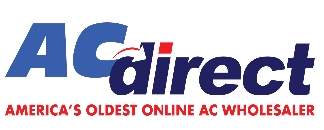So, What's Going on with HVAC Systems in 2024?
-
 By
Michael Haines
By
Michael Haines
- Dec 17, 2023

So, What's Going on with HVAC Systems in 2024?
Written by Michael Haines 12/17/2023 Essentially, if these refrigerants leak into the atmosphere, they can contribute significantly to global warming. As a response, the industry is moving towards refrigerants with a much lower GWP.
Navigating the Future of Comfort: Essential HVAC Updates for 2025 and Beyond
The landscape of home comfort is undergoing a significant transformation, and staying ahead of the curve is crucial for homeowners and businesses alike. As we move into 2025, the heating, ventilation, and air conditioning (HVAC) industry is buzzing with innovation, regulatory shifts, and a heightened focus on sustainability. Suppose you're considering a new HVAC system, upgrading your existing one, or simply want to understand the direction of climate control. In that case, this guide will bring you up to speed on the key HVAC 2025 developments and HVAC industry trends.
The Dawn of a New Era: New HVAC Technology 2025
The coming year promises exciting advancements in how we heat and cool our spaces. Driven by the demand for greater energy efficiency, enhanced comfort, and environmental responsibility, several new HVAC technologies are poised to have a significant impact.
The Continued Rise of Heat Pumps: A Versatile Solution
As highlighted in our 2024 review, heat pumps continue to be popular. Their ability to provide heating and cooling with remarkable efficiency makes them a cornerstone of future HVAC systems. In 2025, we can expect even more sophisticated heat pump technology, including:
- Enhanced Cold-Climate Performance: Manufacturers are making strides in improving the performance of heat pumps in colder regions. Expect to see models that can operate efficiently at lower outdoor temperatures, addressing a key limitation of earlier generations. This includes advancements in defrost cycles and compressor technology. For instance, some new AC technology 2025 incorporates advanced vapor injection compressors that maintain 100% heating capacity even in sub-zero conditions.
- Smart Controls and Integration: The integration of smart home technology is becoming increasingly seamless. New HVAC technology 2025 will feature more intuitive thermostats, zoning systems controlled via smartphone apps, and integration with other smart home devices for optimized energy usage and comfort. Imagine a system that adjusts temperature based on your home location or learns your preferences over time to maximize efficiency.
- Variable Refrigerant Flow (VRF) Systems for Residential Use: While traditionally used in commercial applications, VRF technology increasingly finds its way into larger residential properties. These systems allow individual temperature control in different zones and offer excellent energy efficiency by varying the refrigerant flow based on demand. Expect more compact and cost-effective VRF options to become available in HVAC 2025.
Ventilation Innovations: Breathing Easier and Healthier
Beyond heating and cooling, ventilation is gaining prominence as a critical aspect of indoor air quality. New HVAC technologies in this area include:
- Advanced Filtration Systems: With increasing awareness of airborne pollutants and allergens, more sophisticated filtration systems are expected to be integrated into HVAC units. This includes higher MERV (Minimum Efficiency Reporting Value) filters capable of capturing smaller particles and active air purification technologies like UV-C lamps and bipolar ionization that can neutralize viruses and bacteria.
- Energy Recovery Ventilation (ERV) and Heat Recovery Ventilation (HRV): These systems are designed to improve indoor air quality while minimizing energy loss. ERVs and HRVs pre-condition incoming fresh air with the outgoing stale air, recovering heat in the winter and cooling in the summer. As energy efficiency standards tighten, these technologies will become increasingly vital in HVAC 2025.
- Demand-Controlled Ventilation (DCV): DCV systems adjust ventilation rates based on occupancy and air quality sensors. This ensures that fresh air is supplied only when and where needed, leading to significant energy savings compared to constant ventilation. Expect wider adoption of DCV in both residential and commercial buildings.
Navigating the Regulatory Landscape: New HVAC Regulations 2025
Evolving regulations also drive toward more energy-efficient and environmentally friendly HVAC systems. Understanding these new HVAC regulations 2025 is essential for consumers and industry professionals.
The Continued Impact of SEER2: Setting New Efficiency Benchmarks
As discussed in 2024, the transition to SEER2 (Seasonal Energy Efficiency Ratio 2) standards has already reshaped the minimum efficiency requirements for air conditioners and heat pumps. In 2025, the full impact of these regulations will be felt across the market. Key aspects to remember include:
- Higher Minimum Efficiency Standards: SEER2 testing procedures more accurately account for real-world operating conditions, resulting in generally higher minimum SEER2 ratings than old SEER ratings. All new air conditioners and heat pumps manufactured and installed must meet these stricter efficiency levels.
- Regional Variations: It's important to note that minimum efficiency standards can vary by region within the United States. For example, the Southeast and Southwest regions typically have higher minimum SEER2 requirements for cooling.
- Long-Term Energy Savings: While SEER2 compliant systems might have a slightly higher upfront cost, they are designed to consume less energy over their lifespan, leading to significant savings on utility bills.
The Phasedown of High-GWP Refrigerants: A Greener Future
The most significant regulatory shift impacting the HVAC industry is the ongoing phasedown of hydrofluorocarbon (HFC) refrigerants, which have a high Global Warming Potential (GWP). This transition, driven by international agreements and national regulations, will continue to shape the types of refrigerants used in HVAC now and in the coming years.
- 2025 Refrigerant Changes: For air conditioners, this phasedown will continue next year. While R-410A remains a common refrigerant, production and import are gradually reduced. Expect a wider adoption of lower-GWP alternatives like R-32 and R-454B in new equipment.
- R-32: A Leading Alternative: R-32 has emerged as a prominent new refrigerant in 2025. It boasts a significantly lower GWP compared to R-410A and also offers better energy efficiency in some applications. Many manufacturers are already transitioning their residential and light commercial air conditioning systems to R-32.
- R-454B: Another Low-GWP Contender: R-454B is another refrigerant gaining traction, particularly in heat pump applications. It offers a lower GWP than R-410A and is a viable long-term solution.
- The Importance of Proper Handling: As the industry transitions to new refrigerants, technicians must have proper training and handling procedures. These new refrigerants often have different flammability characteristics, requiring specialized knowledge and equipment.
- Impact on Existing Systems: While the phasedown primarily affects new equipment, owners of older systems using high-GWP refrigerants may face increasing costs for repairs and refrigerant as supplies become more limited. This underscores the importance of considering a system upgrade if your current unit is nearing the end of its lifespan.
Potential Future Regulations: Looking Ahead
While the SEER2 transition and the HFC phasedown are the immediate regulatory focuses, it's essential to be aware of potential changes. These include stricter energy efficiency standards, regulations on other greenhouse gases used in HVAC systems, and incentives for adopting even more sustainable technologies. Staying informed about these potential shifts will help homeowners and businesses make future-proof decisions.
Decoding the Buzzwords: Understanding Key HVAC Concepts
To navigate the evolving HVAC landscape effectively, it's helpful to understand some key terms and concepts:
- SEER (Seasonal Energy Efficiency Ratio) and SEER2 measure an air conditioner's or heat pump's cooling efficiency over a typical cooling season. SEER2 is the updated testing standard that provides a more realistic energy efficiency assessment. Higher SEER/SEER2 ratings indicate greater energy efficiency.
- HSPF (Heating Seasonal Performance Factor) and HSPF2 measure a heat pump's efficiency over a typical heating season. HSPF2 is the updated testing standard. Higher HSPF/HSPF2 ratings indicate greater heating efficiency.
- GWP (Global Warming Potential): A measure of how much a greenhouse gas contributes to global warming compared to carbon dioxide (CO2) over a specific period (usually 100 years). Refrigerants with lower GWPs are more environmentally friendly.
- Refrigerant: A substance used in air conditioning and refrigeration systems to absorb and release heat. The industry is transitioning to refrigerants with lower GWPs.
- Heat Pump: A versatile HVAC system that can provide heating and cooling by transferring heat rather than generating it.
- VRF (Variable Refrigerant Flow): A sophisticated HVAC system that allows for independent temperature control in multiple zones by varying the refrigerant flow.
- ERV (Energy Recovery Ventilation) and HRV (Heat Recovery Ventilation) are ventilation systems that recover energy from outgoing air to pre-condition incoming fresh air, improving energy efficiency and indoor air quality.
- MERV (Minimum Efficiency Reporting Value): A rating system for air filters that indicates their ability to capture airborne particles of different sizes. Higher MERV ratings mean better filtration.
The Ripple Effect: HVAC Supply Chain Issues
While technological advancements and regulatory changes drive the future of HVAC, the industry continues to grapple with HVAC supply chain issues. These challenges, which have been ongoing for several years, can impact the availability and pricing of HVAC equipment and components. Factors contributing to these issues include:
- Global Economic Conditions: Fluctuations in the global economy can affect the production and transportation of raw materials and finished goods.
- Geopolitical Events: International events and trade policies can disrupt the supply chain.
- Demand Fluctuations: Seasonal peaks in demand for HVAC systems and unexpected surges due to extreme weather events can strain supply chains.
- Component Shortages: Shortages of specific electronic components and other critical parts can delay production.
While some improvements have been observed, it's prudent to anticipate that HVAC supply chain issues may continue influencing lead times and pricing in 2025. Homeowners considering HVAC upgrades should plan accordingly and work closely with their contractors to understand potential timelines.
Investing in Comfort and Sustainability: Making Informed Decisions
Navigating the evolving world of HVAC can seem complex, but understanding the key trends and regulations empowers you to make informed decisions. When considering a new HVAC system in 2025, keep the following in mind:
- Prioritize Energy Efficiency: Look for systems with high SEER2 and HSPF2 ratings to maximize energy savings and reduce carbon footprint.
- Embrace Lower-GWP Refrigerants: Opt for systems that utilize environmentally friendly refrigerants like R-32 or R-454B.
- Consider Heat Pump Technology: Explore the benefits of heat pumps for efficient heating and cooling, especially with advancements in cold-climate performance.
- Invest in Smart Controls: Use smart thermostats and zoning systems for enhanced comfort and energy management.
- Don't Overlook Ventilation: Ensure your HVAC system provides adequate ventilation and consider advanced filtration for improved indoor air quality.
- Plan Ahead: Given potential HVAC supply chain issues, it's wise to plan your HVAC upgrades, especially if your current system is nearing the end of its life.
- Consult with Professionals: Seek advice from qualified HVAC contractors who can assess your needs and recommend the best system for your home and budget.
The Future is Now: Embracing Innovation in HVAC
The HVAC industry trends 2025 point towards a future where comfort, efficiency, and sustainability go hand in hand. By embracing new HVAC technologies and understanding the evolving regulatory landscape, homeowners and businesses can invest in HVAC systems that provide optimal comfort and contribute to a greener and more sustainable future. The changes happening in HVAC now are laying the foundation for a more comfortable and environmentally responsible tomorrow.

 and now, NASCAR Racing Sponsor
and now, NASCAR Racing Sponsor








